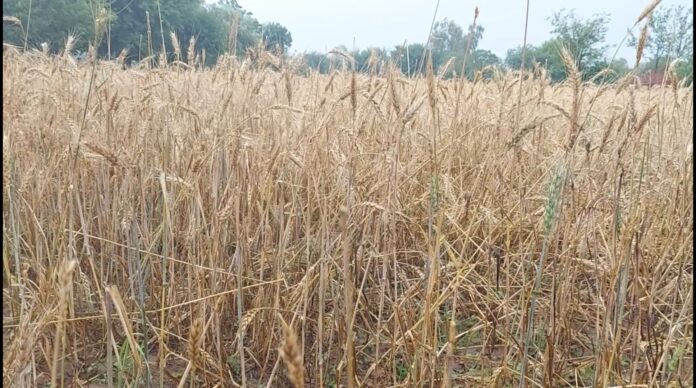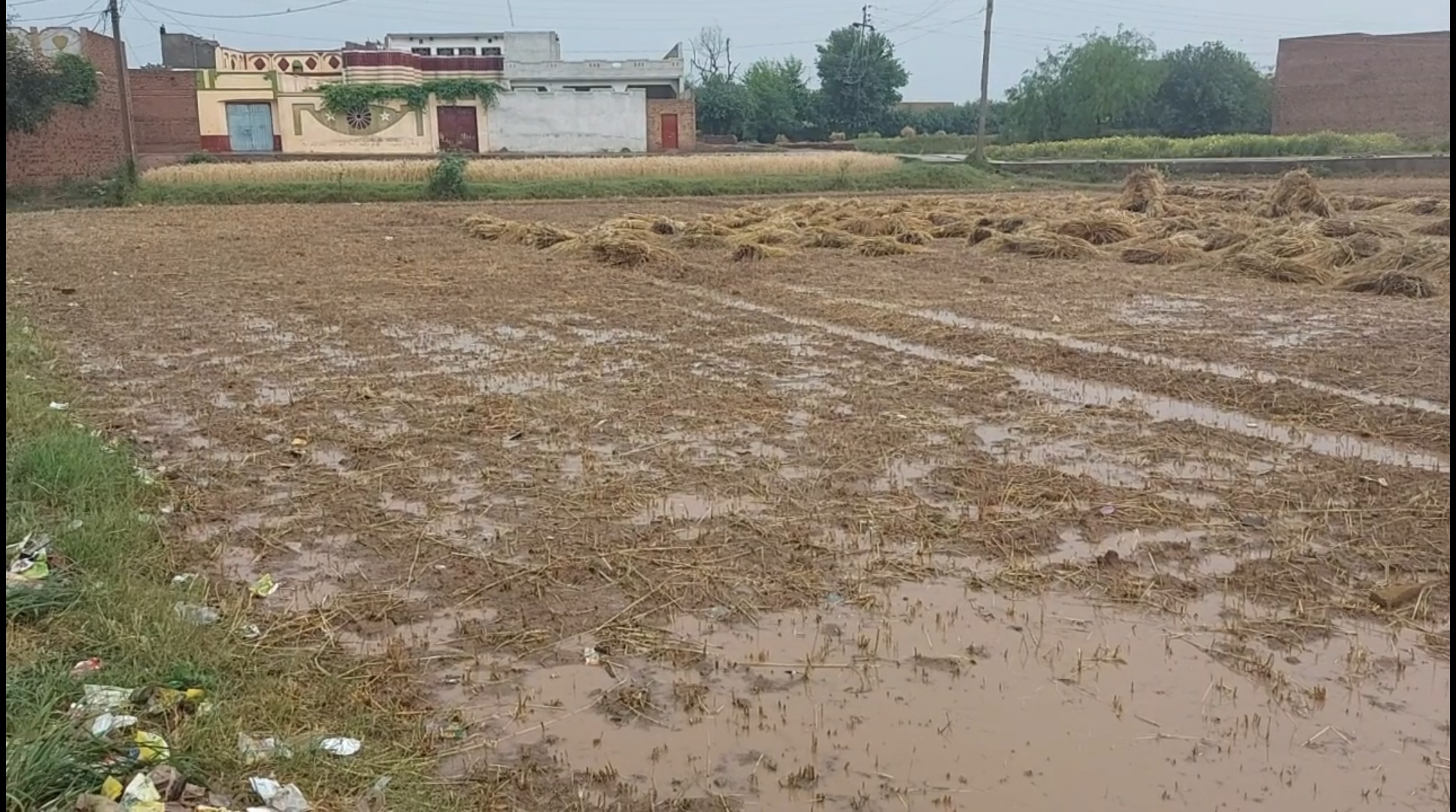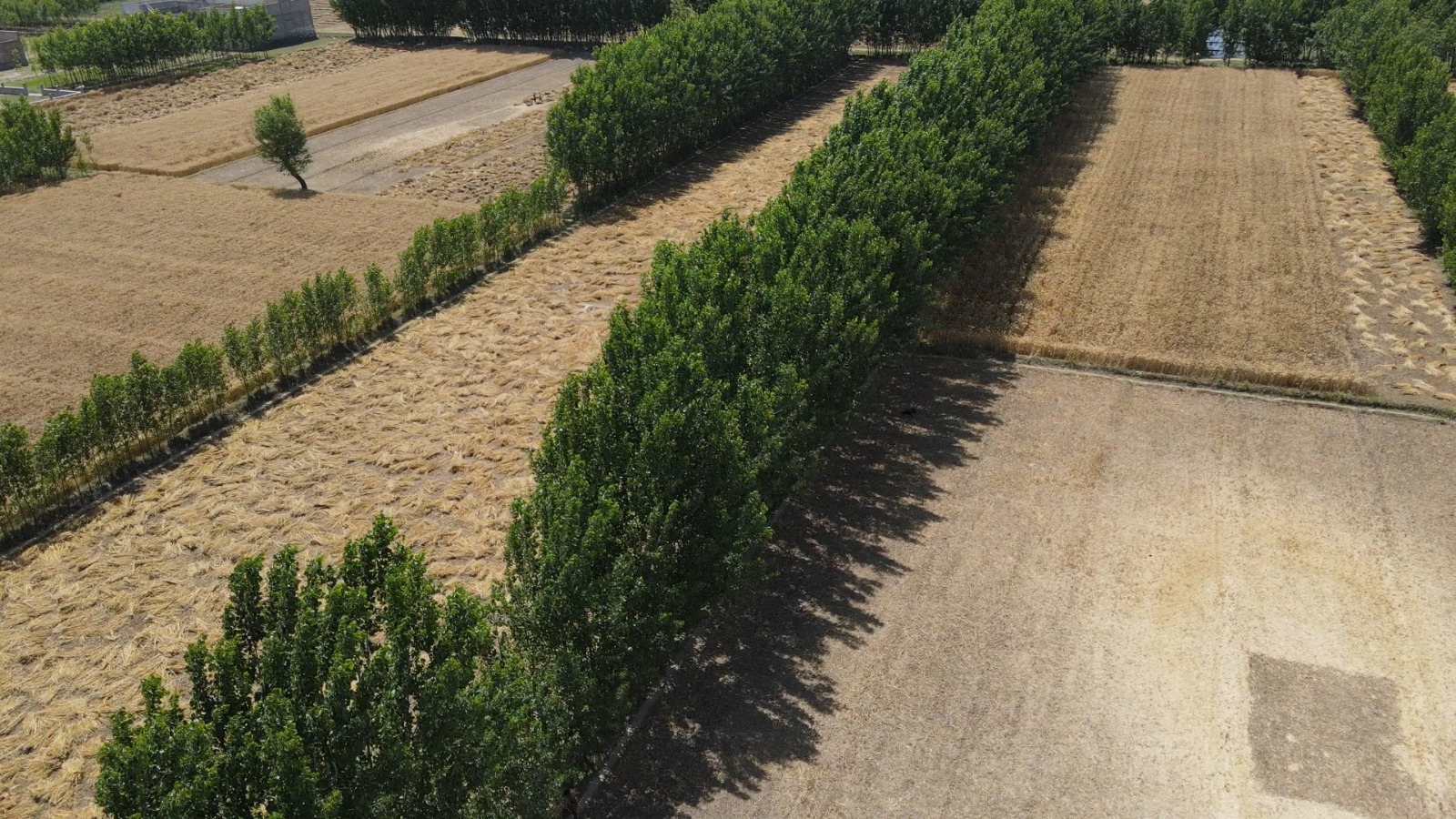
Iftikhar Khan
Mr. Madad Khan, a 60-year-old farmer from Sheikh Muhammadi, a suburb of Peshawar, recently harvested his wheat crop. The process was exhausting due to the heavy rain and hailstorms, but now he and other farmers have a few days of rest.
However, despite producing 40 maund (2000 kg) of wheat, Madad Khan is frustrated and worried. Untimely rains and hailstorms have damaged a significant portion of his wheat crop, resulting in lower production than expected. The rising prices of wheat and flour in Khyber Pakhtunkhwa (KP) province due to the ban on flour supply from Punjab province add up to his worries. With a household of 25 people, his wheat supply is insufficient for the entire year, and purchasing more wheat at higher prices is inevitable for him.
Madad Khan mentions that the price of wheat in nearby areas has reached up to 6,000 rupees per maund (50kg), double the price compared to last year. Had there been no hailstorms, he would have been self-sufficient in wheat grain for the household.
Also Read: Charsadda Implements Innovative Plantation Project to Safeguard Against Future Floods
The recent irregular rains and hailstorms in KP have caused severe damage to the wheat crops in various districts, including Madad Khan’s district. According to the Provincial Department of Agriculture, the total wheat production this year is expected to be one lac (0.1 million) metric ton less than anticipated.
Impact of Rain and Hailstorms
The data provided by the Crop Reporting Services of the Department of Agriculture in Khyber Pakhtunkhwa shows that wheat was cultivated on 19 lac 31 thousand 12 acres of land in the province this year, with an expected production of 1.4 million metric tons. However, the climactic effects have caused an estimated loss of up to 100,000 metric tons. The most affected districts of Khyber Pakhtunkhwa province include DI Khan, Buner, Swat, Mardan, and Swabi.
Uzair Ahmed, a GIS Specialist at Crop Reporting Services, explains that satellite images and field visits confirm that more than 36,000 acres of land in the province were impacted by heavy rains and hailstorms. The affected districts are the primary sources of wheat production in the province, making the situation even more concerning.
Wheat Demand, Production, and Export Potential
The annual requirement of wheat in KP province is 5 million metric tons, while the production ranges from 1.2 to 1.3 million metric tons per year. To meet the remaining 75% of the requirement, wheat has to be imported from Punjab Province, and from other countries. The Punjab province, this year, has a bumper crop of 27.5 metric tons. There were hopes for increased production in KP as well, but the rains have ruined those expectations.
The current wheat crop in Pakistan is being hailed as excellent. Just a few days ago, Prime Minister Shehbaz Sharif took to Twitter to express his satisfaction with the wheat harvest, emphasising that this year’s crop has been comparatively larger than the previous decade. The Prime Minister attributed this success to the government’s provision of high-quality seeds, consistent supply of fertilizers to farmers, and timely delivery of agricultural packages.

According to the Department of Agriculture, the country is expected to produce over 27 million tons of wheat this year, which is considered sufficient to meet the nation’s requirements. Punjab holds the largest share in wheat production, accounting for 71% of the total, followed by Sindh with 13%, and Khyber Pakhtunkhwa with approximately 8%.
Prime Minister Shehbaz Sharif expressed optimism that, thanks to the exceptional wheat harvest across the country, Pakistan will soon join the ranks of wheat-exporting nations. However, experts have acknowledged the challenges of taking it to that level.
Professor Inamullah from the Department of Agriculture at Peshawar Agricultural University emphasized the significance of wheat in daily life, stating that it is consumed three times a day.
The per capita wheat consumption in Pakistan, he furthered, exceeds 125 kilograms annually, while the country’s overall wheat requirement reaches up to 29 million metric tons. Although Pakistan was self-sufficient in wheat production for a while, the current production falls short, leading to an annual import of 2 to 3 million metric tons.
According to him, the two primary factors contributing to the decline in wheat production are population growth and the impacts of climate change.
How does climate change affect wheat production?
Climate change has significant implications for wheat production, as highlighted by Professor Inamullah. One major example of this impact is the recent occurrence of erratic rains and devastating hailstorms during the wheat harvesting season in KP. In the past, heavy rains during April and May were uncommon, and farmers did not face difficulties in harvesting their crops. However, due to climate change, the rainfall patterns have undergone a shift.
Professor Inamullah explains that in the last few years, the situation has changed. Instead of the needed rain for sowing wheat in October and November, there is now either very little or no rain.
The rainfall that used to occur in October and November has now shifted to the spring season,” he explained, adding that while spring rains can be beneficial for wheat grain formation, however, when the series of rain events becomes prolonged and severe, it can lead to destructive consequences, as observed this year.
What adds to the concern, according to Professor Inamullah, is that this shifting of rains in March and April is not consistently predictable. Last year, wheat production was lower than the previous year due to a drought that occurred during the grain formation stage in March and April. Improper grain formation resulted from insufficient rainfall during that critical period. This year, the problem has been the prolonged spell of rains combined with heavy hailstorms, which will likely have a detrimental effect on overall production and grain quality.

Furthermore, Professor Inamullah notes that around 67% of the wheat cultivation area in KP during the Rabi season relies on rainfed agriculture. This means that the entire wheat crop in this area depends entirely on timely rainfall for water, from sowing to grain formation. Consequently, fluctuations in rainfall directly impact wheat production. In addition to rainfall patterns, the overall impact of global warming caused by greenhouse gas emissions is a major concern for agriculture as a whole, including wheat production.
Threatened Districts in KP
Dr. Inamullah highlights that in the near future, the southern districts of KP may face the adverse effects of high temperatures on the wheat crop. As temperatures rise, the wheat in these regions may ripen prematurely, resulting in inadequate kernel formation.
According to the Crop Reporting Services of the Department of Agriculture, the districts with the highest wheat production in KP are DI Khan, followed by Swat, Mardan, and Swabi. Uzair Ahmed, an official from Crop Reporting, confirms that recent hailstorms have caused the most damage in the southern districts, particularly in DI Khan.
Addressing Climate Change Effects
Pakistan is geographically and climatically located in the subtropical zone, making it highly vulnerable to climate change impacts. Although Pakistan’s contribution to greenhouse gas emissions is less than one percent, it is among the ten countries most affected by the negative consequences of climate change.
Madad Khan, a farmer from Peshawar, believes that these untimely rains are beyond human control, and he attributes them to Allah Almighty. He expresses the possibility of abandoning wheat cultivation if similar rainfall patterns persist in the future.
Professor Inamullah emphasizes the need for changes in agricultural practices to mitigate the effects of climate change. While controlling global climate change at a local level is challenging, he suggests implementing measures to minimize its impact. Open-air agriculture, like wheat farming, is highly susceptible to climate-related disasters. However, the adverse effects can be reduced with appropriate measures and preparations.
To address climate change, Professor Inamullah proposes increasing the area under wheat cultivation during the Rabi season, especially with seeds that can thrive in severe and unpredictable weather conditions. Collaborative projects with China, such as those undertaken by the University of Agriculture Peshawar, aim to develop such seeds. However, major success in these projects is yet to be achieved.
By taking proactive steps and adapting farming practices to climate change, it is possible to protect the agricultural sector, including wheat production, from its adverse effects.






